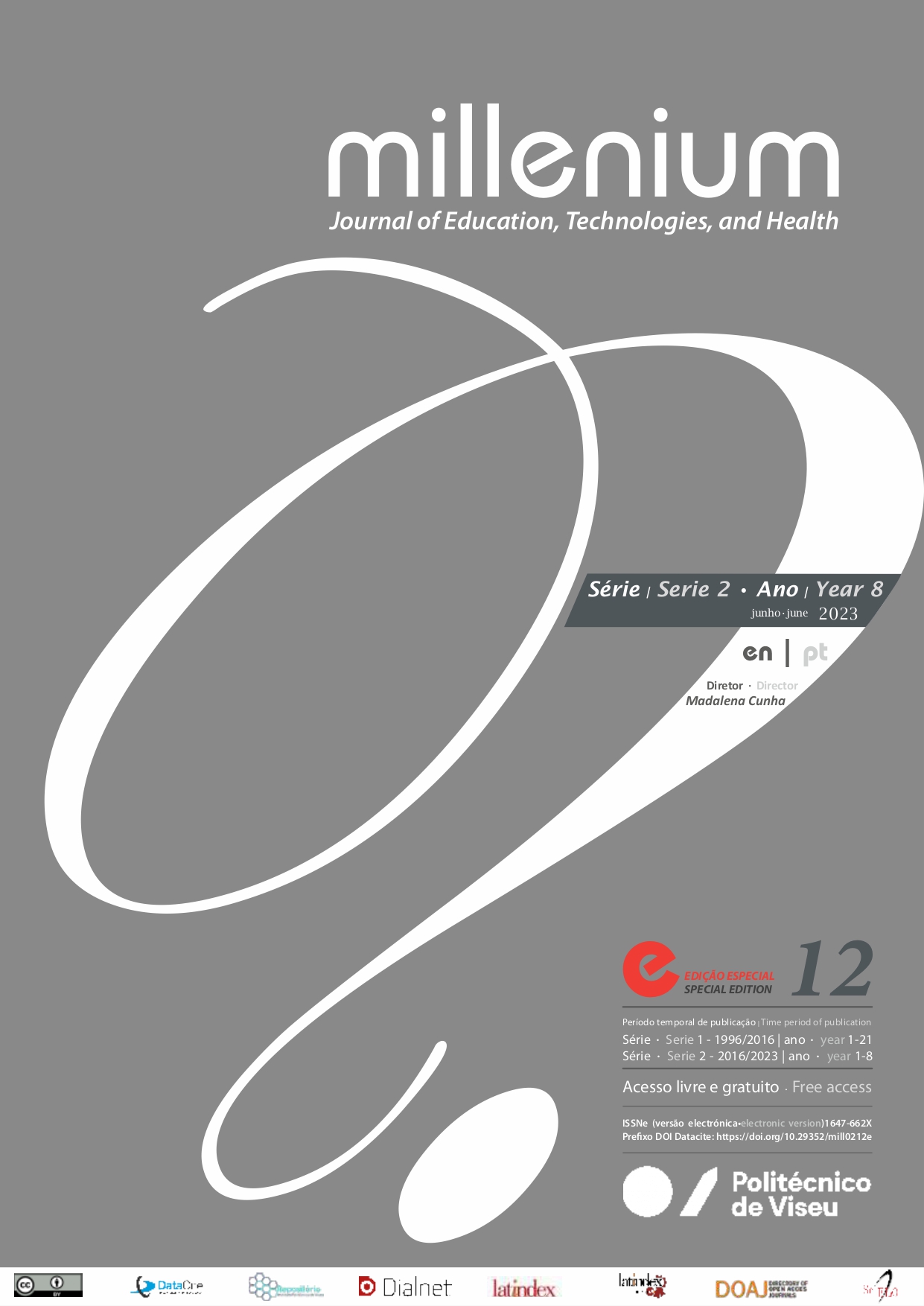Glycemic control in people in critical condition
“16 years in the path towards quality and safety "
DOI:
https://doi.org/10.29352/mill0212e.29278Keywords:
nursing; people in critical condition; insulin; hypo/hyperglycemia; protocolAbstract
Introduction: Glycemic control in people in critical condition was implemented in an intensive care unit in 2003. Based on the publications of Dr. Greet Van Den Berghe and collaborators, a working group was created, and an action plan algorithm was designed. This algorithm underwent several changes, which were supported by scientific evidence and internal audits, to assess its effectiveness and safety.
Objective: Verification of the safety and effectiveness of the protocol and the implications for nursing workload.
Methods: Quantitative study of a prospective nature, data collection was carried out using a collection instrument prepared by the working group and statistical treatment using the Excel program.
Results: The evolution from 2003 to 2019 is evidenced by the results and respective critical analysis of three audits carried out at different periods, with actual samples of 115, 61, and 112 patients, respectively, in which the different protocols for glycemic control with administration of continuous intravenous insulin infusion, applied in the unit, were effective and safe, and hypoglycemia did not translate into major complications (0.09%; 0.02% e 0,1% respectively).
Conclusion: These results were mainly driven by the nursing team's ability to monitor and manage its responsibilities and less driven by the pre-defined goals of each protocol's blood glucose control.
Since September of 2018, we use the modified Yale.
Downloads
References
American Diatetes Association (2018). Diabetes Care in the Hospital: Standards of Medical Care in Diabetes – 2018. Diabetes Care, 41 (1), S114-S151. https://doi.org/10.2337/dc18-S014
Couto, D., Barbosa, K., Silva, M., Carvalho, M., Silva, F., Viana, A. (2021). Protocolos de manejo de hiperglicemia em paciente crítico e não crítico em ambiente hospitalar. Revista Baiana de Saúde Pública, n45 n.supl.2, 8-23. https://doi.org/10.22278/2318-2660.2021.v45.NSupl_2
De Block, C.E.M., Rogiers, P., Jorens, P.G., Shepens, T., Scuffi, C., & Van Gaal, L.F. (2016). A comparison of two insulin infusion protocols in the medical intensive care unit by continuous glucose monitoring. Annals of Intensive Care 6, 115. https://doi.org/10.1186/s13613-016-0214-9
Diário da República, 2.ª série (2011) — N.º 35 — 18 de Fevereiro de 2011. Regulamento n.º 124/2011, de 18 de Fevereiro, p.8656. https://diariodarepublica.pt/dr/detalhe/regulamento/124-2011-3477013
Godinho, C., Jordão, A., Dias, A., Lopes, A., Duarte, A., Carvalho, D., Nascimento, E., Carrasqueira, H., Louro, J., Ricciulli, M., & Melo, M. (2015). Joint Recommendations of the Portuguese Diabetology Society (SPD)/Portuguese Internal Medicine Society (SPMI) on the Management and Treatment of Hyperglycemia in Non Critical Hospital Inpatients. Suplemento da Revista da Sociedade de Medicina Interna, 10 (3). https://www.spmi.pt/wp-content/uploads/NEDM_262.pdf
Jacobi, J., Bircher, N., Krinsley, J.S., Agus, M.S.D., Braithwaite, S.S., Deutschman, C.S., Freire, A., Geehan, D., Kohl, B., Nasraway, S.A., Rigby, M. R., Sands K., Schallom, M.E., Taylor, B.E., Umpierrez, G.E., Mazuski, J.E., & Schunemann, H. (2012). Guidelines for the use of an insulin infusion for the management of hyperglycemia in critically ill patients. Critical Care Medicine, 40 (12), 3251-3276. https://www.researchgate.net/publication/233723718
Marvin, M. R., Inzucchi, S. E., & Besterman, B. J. (2016). Minimization of Hypoglycemia as an Adverse Event 8. During Insulin Infusion: Further Refinement of the Yale Protocol. Diabetes Technology & Therapeutics, 18 (8), 480-486. https://doi.org/10.1089/dia.2016.0101
Ngalob, Q., Jimeno, C., & Isip-Tan, I. T. (2014). Evaluation of Effectiveness and Safety of an ICU Insulin Infusion Protocol. Journal of the ASEAN Federation of Endocrine Societies, 29 (1), 33-41. https://doi.org/10.15605/jafes.029.01
The Nice Sugar Studie Investigators. (2009). Intensive versus convencional Glucose Control in critically ill patients. The New England Journal of Medicine, 360 (13), 1283-1297. https://www.nejm.org/doi/pdf/10.1056/NEJMoa0810625?articleTools=true
Van den Berghe, G., Wouters, P. J., Bouillon, R., Weekers, F., Verwaest, C., Schetz, M., Vlasselaers, D., Ferdinande, P., & Lauwers, P. (2003). Outcome benefit of intensive insulin therapy in the critically ill: Insulin dose versus glycemic control. Critical Care Medicine, 31(2), 359–366. https://doi.org/10.1097/01.CCM.0000045568.12881.10
Van den Berghe, G., Wouters, P., Weekers, F., Verwaest, C., Bruyninckx, F., Schetz, M., Vlasselaers, D., Ferdinande, P., Lauwers, P., & Bouillon, R. (2001). Intensive insulin therapy in critically ill patients. The New England Journal of Medicine, 345(19), 1359–1367. https://doi.org/10.1056/NEJMoa011300
Yale Diabetes Center, & Yale-New Haven Hospital. (2009). ICU Insulin Infusion Protocol (IIP) for Adults. http://agrotikosiatros.gr/documents/ICUIPP-Yale.pdf
Downloads
Published
How to Cite
Issue
Section
License
Copyright (c) 2023 Millenium - Journal of Education, Technologies, and Health

This work is licensed under a Creative Commons Attribution 4.0 International License.
Authors who submit proposals for this journal agree to the following terms:
a) Articles are published under the Licença Creative Commons (CC BY 4.0), in full open-access, without any cost or fees of any kind to the author or the reader;
b) The authors retain copyright and grant the journal right of first publication, allowing the free sharing of work, provided it is correctly attributed the authorship and initial publication in this journal;
c) The authors are permitted to take on additional contracts separately for non-exclusive distribution of the version of the work published in this journal (eg, post it to an institutional repository or as a book), with an acknowledgment of its initial publication in this journal;
d) Authors are permitted and encouraged to publish and distribute their work online (eg, in institutional repositories or on their website) as it can lead to productive exchanges, as well as increase the impact and citation of published work
Documents required for submission
Article template (Editable format)





